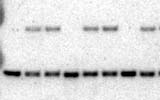


| Home | |
| Research | |
| Publications | |
| AAV Serotype Reagents | |
| Foamy Reagents | |
| Lab Members | |
| Positions | |
| Related Links | |
| Contact Us | |
| For Lab Members | |
References
| Gregorevic, P., Blankenship, M.J., Allen, J. M., Crawford, R.W., Meuse , L., Miller, D.G., Russell, D.W., and Chamberlain, J.S. (2004). Systemic Delivery of genes to striated muscles using adeno-associated virus vectors. Nat. Med. 10, 828-834. | |
| Halbert, C. L., Allen, J. M., and Miller, A. D. (2001). Adeno-associated virus type 6 (AAV6) vectors mediate efficient transduction of airway epithelial cells in mouse lungs compared to that of AAV2 vectors. J Virol 75, 6615-6624. | |
| Khan, I.F., Hirata, R.K., and Russell, D.W. (2011). AAV-mediated gene targeting methods for human cells. Nature protocols 6, 482-501. | |
| Mitsui, K., Suzuki, K., Aizawa, E., Kawase, E., Suemori, H., Nakatsuji, N., and Mitani, K. (2009). Gene targeting in human pluripotent stem cells with adeno-associated virus vectors. Biochem Biophys Res Commun 388, 711-717. | |
| Rutledge, E. A., Halbert, C. L., and Russell, D. W. (1998). Infectious clones and vectors derived from adeno-associated virus (AAV) serotypes other than AAV type 2. J Virol 72, 309-319. |